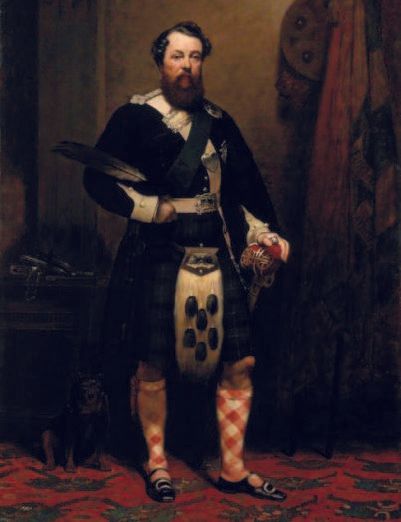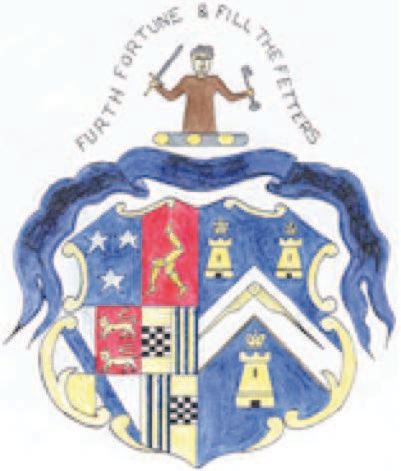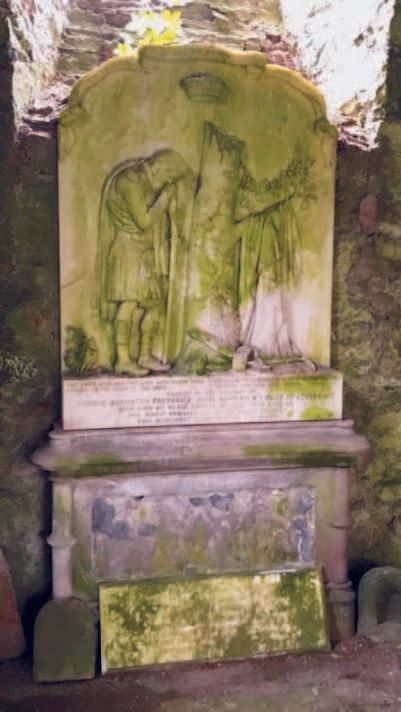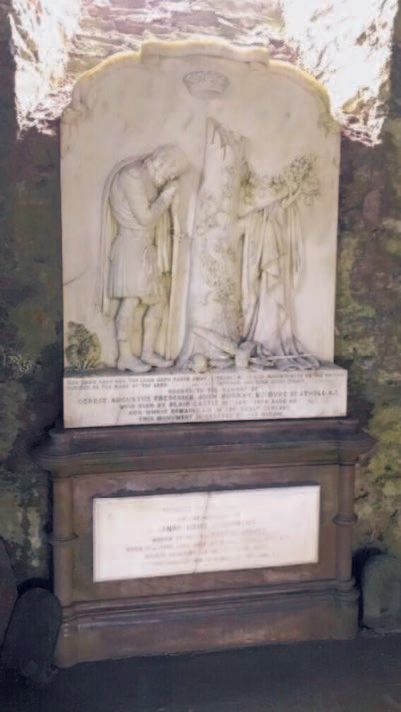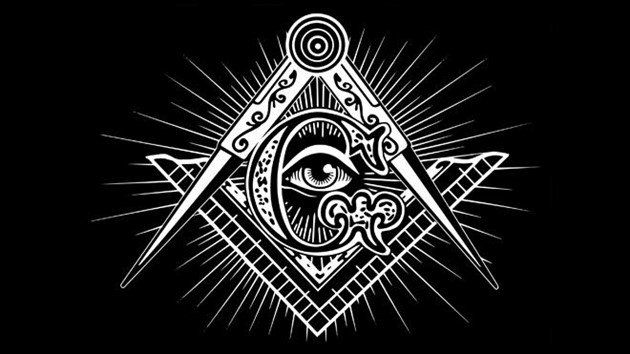The 6th Duke of Athole: Chieftain, Landlord, Patriot and Mason
By Bro. David Brown PM of The Athole Lodge No 384
Member No. 1 on the roll of our Lodge is Bro. George Augustus Frederick John Murray, 6th Duke of Athole and Grand Master Mason of Scotland. That this Lodge is called TheAthole Lodge is no coincidence. The founding fathers, or rather, brothers, of the Lodge were Bro. Dr. Donald Patrick Stewart and Bro. Duncan Walker, both of whom were Perthshire men. They had been at the centre of a dispute within the Kirkintilloch Lodge St John Kilwinning No. 28 and had decided that the best way to restore Masonic harmony to Kirkintilloch was to establish a new Lodge. Dr Stewart was known to the 6th Duke of Athole and, with his assistance, the Lodge was quickly established. There were no sponsor Lodges. The Grand Master Mason’s support was sufficient and he would have been gratified by the strong Athole identity that the new Lodge was to assume. George Augustus Frederick John Murray was born on 20 September 1814 in Great
Cumberland Place, London. His father was James Murray, 1st Baron Glenlyon, brother of the 5th Duke of Atholl, and his wife, Lady Emily Frances Percy. On his father’s death in 1837, George Murray became 2nd Baron Glenlyon. In 1839, he married Anne Home-Drummond of Blair Drummond, near Stirling In 1846, John Murray, the 5th Duke, died at the age of 68. He had been declared insane in 1798, at the age of 20, and lived in seclusion for the rest of his life. George Murray, Lord Glenlyon, succeeded him as 6th Duke, being the nearest male relative.
The Chieftain
As 6th Duke, George Murray became chieftain of the Clan Murray, a position he took seriously. Atholl was an ancient Scottish Earldom. The Murrays had gained the title of Earl of Atholl in 1629 from the Stewart family, when the 5th and last Stewart Earl was succeeded by his grandson, John Murray. The Earldom became a Marquisate in 1676 and then, in 1703, a Dukedom. Ever proud of this heritage, the 6th Duke formed the Athole Highlanders in 1839, composed of his clansmen and retainers. On a visit to Blair Castle in 1844, Queen Victoria was so impressed with their turnout that she ordered that the Athole Highlanders be presented with colours, giving them official status as a British regiment. Ever the romantic, in 1853 the 6th Duke attended the Earl of Eglinton's
tournament in Ayrshire in the guise of 'The Knight of the Gael', accompanied by a retinue of Athole Highlanders. The armour he wore that day can still be seen in Blair Castle.
The Landlord
The title of Duke of Athole brought with it immense estates in Perthshire and also the Lordships of Stanley and Strange in England. The crests of these Lordships appear on our own Lodge crest and they brought with them the sovereignty of the Isle of Man, which the 3rd Duke had sold to the British government in 1765 for the immense sum of £70,000 with an annuity of £2,000. The 6th Duke was no absentee landlord, but continued to live as much as he could at his ancestral home of Blair Castle. He also took note of the interests of his tenants – whom, being an old romantic, he regarded as his clansmen – and
took part in all the outdoor sports and activities that the estate allowed, employing local men as stalkers, beaters and carriers.
The Patriot
As a young man, George Murray had served as a Lieutenant in the 2nd Dragoon Guards for a short time, until retiring from the army in 1840. He was a loyal subject of Queen Victoria, to whom he and his wife, Duchess Anne, became close friends. In 1846, he became Deputy Lieutenant of Perthshire and was invested as a Knight of the Thistle in 1853. He was a member of the House of Lords, but chose to spend most of his time at Blair Castle or officiating at Masonic events throughout Scotland.
The Mason
George Murray was born into a family with Freemasonry in its blood. The 2nd, 3rd and 4th Dukes of Atholl had all been Masters of the Lodge of Dunkeld St John No. 14. The 3rd and 4th Dukes were also Masters of the Ancient Grand Lodge in England. The 4th Duke was instrumental in having Masonic Lodges exempted from the provisions of the Unlawful Societies Act of 1799, so long as they maintained a list of members and supplied it to the magistrates. He also played a crucial role in bringing the English ‘Ancient’ and ‘Modern’ Grand Lodges together to form the United Grand Lodge of England. This tradition of service to Freemasonry would be carried forward by the 6th and 8th Dukes. On 30 November 1841, George Murray, Lord Glenlyon, still to become the 6th Duke,
was initiated into the Lodge of Dunkeld St John No. 14. He was quickly passed and raised and appears to have assumed the Chair of the Lodge on 27 December in the same year. In 1843, he was installed as the 66th Grand Master Mason of Scotland and, in 1845, as Grand Master of the Order of the Temple in Scotland. He then expended a great deal of energy in the service of Freemasonry, from laying foundation stones to overseeing the running of Grand Lodge. Exactly 100 Lodges were chartered during his period of office, from No. 337 The Hope of Kurrachee to No. 436 Prince of Wales, including the Glenlyon Lodge No. 346 in Jamaica, chartered while he was still Lord Glenlyon. His tenure ended only when, on 16 January 1864, he succumbed to throat cancer, aged 49. He was succeeded as 7th Duke by his only child John. His impressive funeral was well attended by the cream of Scottish society in general and Freemasonry in particular. On that occasion, the Grand Lodge of Scotland produced a 23-page tribute, showing the high regard in which he was held, not only in Scotland, but throughout the Masonic world. He lies buried in a vault within the ruin of St Bride’s Kirk, in the grounds of Blair Castle. A beautiful carved memorial lies above, rich in Masonic symbolism, which, over the years, suffered from the growth of algae, until, that is, last week, when our own RWM, with the consent of the Atholl Estates, cleaned it professionally on behalf of the Lodge. The Man We have heard of another man in Freemasonry in these terms: he was a man of rare
excellence, of simple but devout piety, the embodiment of honour, true to every obligation, faithful even unto death. That description may also belong to the 6th Duke of Athole. Brethren, we of this, The Athole Lodge, can be rightly proud of the first member on our roll.
Grand Master Masons of Scotland
1773–1774: John Murray, 3rd Duke of Atholl (G.M. of England-Ancients 1771-74)
1778–1780: John Murray, 4th Duke of Atholl (G.M. of England-Ancients; 1775–81; 1791-1813)
1843–1864: George Murray, Lord Glenlyon (afterwards 6th Duke of Atholl)
1909–1913: John Stewart-Murray, Marquess of Tullibardine (afterwards 8th Duke of Atholl)
Masters of the Lodge of Dunkeld St John No. 14
1735, 1747-1750: James Murray, 2nd Duke of Atholl
1750-1764: Hon. John Murray of Glencarse and Strowan (later 3rd Duke)
1764-1774: John Murray, 3rd Duke of Atholl
1776-1830: John Murray, 4th Duke of Atholl
1841-1846: George Murray, Lord Glenlyon (later 6th Duke)
1846-1864: George Murray, 6th Duke of Athole
1895-1909: John Murray, Marquess of Tullibardine (later 8th Duke)

